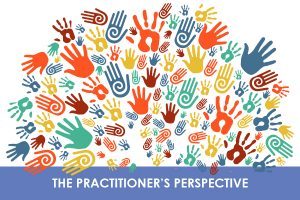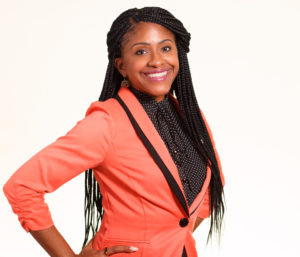Exploring Equity Issues - Blog

A Tale of Two Cities: My Health Equity Work in the Nation’s Capital
By Dr. Maranda C. Ward
Educator & Researcher
Dr. Maranda C. Ward teaches health equity curriculum for undergraduate students that integrates her #EquityMatters podcast. Her research is translated into practice as the Co-Founder and Executive Director of Promising Futures. She earned her Doctorate in Education from George Washington University, her Master’s in Public Health from Tulane University, and her Bachelor’s degrees in Sociology and Anthropology from Spelman College. She describes herself as a community educator – going to churches, recreation centers, schools, art galleries, shelters, and anywhere youth grow and thrive. She enjoys learning from youth, traveling, and brunch.
MAEC sat down with Dr. Ward so she could share her experience.
Can you describe the schools and/or organizations you work with?
 I am an educator in school and out-of-school spaces. I teach undergraduate students full-time as a Visiting Assistant Professor in the School of Medicine and Health Sciences at The George Washington University (GW). While I teach traditional undergraduates entering their four-year degree program directly after high school, I also teach adult learners enrolled in our online degree programs. These distance education programs serve a large population of military personnel and working professionals. When I am not teaching at GW, I am working with, learning from, and translating my research into practice with the DC youth engaged in the youth development pipeline I direct and manage called Promising Futures. This exclusively grant-funded pipeline engages youth ages 11 to 24 in long-term programming as middle school ambassadors in a curriculum-based after school program; high school peer educators in an edutainment-based community service program; and college-aged youth as youth builders who train and facilitate workshops for the younger cohorts.
I am an educator in school and out-of-school spaces. I teach undergraduate students full-time as a Visiting Assistant Professor in the School of Medicine and Health Sciences at The George Washington University (GW). While I teach traditional undergraduates entering their four-year degree program directly after high school, I also teach adult learners enrolled in our online degree programs. These distance education programs serve a large population of military personnel and working professionals. When I am not teaching at GW, I am working with, learning from, and translating my research into practice with the DC youth engaged in the youth development pipeline I direct and manage called Promising Futures. This exclusively grant-funded pipeline engages youth ages 11 to 24 in long-term programming as middle school ambassadors in a curriculum-based after school program; high school peer educators in an edutainment-based community service program; and college-aged youth as youth builders who train and facilitate workshops for the younger cohorts.
Can you tell us more about your experience related to health equity and student outcomes?
I am often asked to host trainings, talks, and workshops on and off the GW campus related to civic engagement. One of my most popular training sessions on asset-based community development is one that I have coined as, “A Tale of Two Cities.” It is in discussions like this that I engage students in understanding structural inequity. Like them, when on campus, I can walk on paved sidewalks to Whole Foods and pay $12 for lunch at the hot food bar. Alternatively, I can choose from over 28 full-service restaurants and 16 other fast food options within a 0.5-mile radius of my office. I can eat that lunch in buildings awarded platinum ratings for leadership in energy and environment design. I can also leave campus and conveniently hop on the metro, the circulator, or the Kennedy Center shuttle. In fact, my office building is located on Pennsylvania Ave, NW with a bus stop right out front connecting to five bus lines. In addition, because I also live right off of Pennsylvania Ave, SE, I can take the 30S, 30N, 36, or 39 from my office building that lets me off a block away from my house. Let’s take that trip.
If you look out of the bus window as soon as you get on, you will see commercial real estate filled with a range of retailers from hotels and eateries to coffee shops and both shared/private workspace. You will also see people walking dogs and pushing strollers past high-rise residences and historically preserved attractions. The people are as varied as the sites they visit- their white, yellow, brown, and black bodies occupy the same parks, crosswalks, and shared Uber rides…until you get to the John Philip Sousa Bridge carrying you over the Anacostia River. As you exit this bridge, you will notice an influx of either vacant or blighted storefronts alongside old tattered awnings covering dilapidated commercial real estate such as the beauty supply and Metro PCS interspersed among multiple carry-outs and even more liquor stores. Are we still even on Pennsylvania Ave? Yes, this is my racially segregated black neighborhood—one ripe with disinvestment.
Case in point, there are proposals underway to reroute the one Circulator bus that comes into my Ward 7 neighborhood to a neighboring ward leaving us with even less public transportation options than we have now to travel to work, school, doctor visits, and grocery stores. The media coverage of food safety violations coupled with resident pressure to expand store hours and staffing capacity at our two Safeway locations is yet another example of incessant barriers to maintaining optimal health. As Toni Lawson, a SE resident, rightly pointed out in the 2018 NPR documentary on food access in the District, what we are experiencing is food apartheid. In other words, there is nothing coincidental about the racially segregated parts of the city being historically and systemically deprived of their right to health. While I point out these injustices to residents and students alike, I also capitalize on community assets to move the needle towards health equity.
Such efforts towards health equity come in the form of education. I am the subject matter expert on heath equity in the Department of Clinical Research and Leadership in GW’s Health Sciences Program. In this capacity, I pull a health equity thread of content and learning outcomes focused on the social determinants of health and eliminating health disparities across a suite of undergraduate courses that I teach and evaluate. In evaluating this curriculum this past fall, I collected pilot data on how to specifically teach and assess ethnocultural empathy (Wang et. al., 2003). To improve students’ competencies in gaining perspective, I rely on personal stories about the health experiences of racial and ethnic minorities. From my #EquityMatters podcast on Soundcloud to successfully securing intramural funds to expand this research, I am venturing into what my institution considers a health professionals curriculum innovation. I also have a leading role in one of my department’s pipeline initiatives aimed at increasing the diversity of high school students pursuing health science majors in college. Our newly formed Academy of Health Scholars is designed under the well-documented premise that a diverse health workforce helps to reduce providers’ implicit bias that contributes to mistrust, miscommunication, poor health literacy, and overall substandard care.
Such efforts towards health equity also come in the form of service. It goes without saying that I am heavily invested in the conditions, opportunities, and resources that shape the health outcomes and well-being of Ward 7 residents. I work with contractors, developers, and homeowners to address safety, access to city services, maintenance of the aesthetic charm of historical architecture, and opportunities for residents to grow and thrive. My work as an elected Advisory Neighborhood Commissioner overlaps with my work on the Ward Infinity advisory board. More specifically, I provide input, guidance, and ongoing support to Ward 7 and 8 residents who secured seed funds from Sibley Hospital/Johns Hopkins Medicine to develop and refine health and wellness projects for their neighborhoods. Since I am well aware that Ward 7 only has three full-service restaurants and several vacant buildings available for lease, I have offered guidance to a proposed pop-up market for Ward 7 business owners. Suffice to say, coupled with a strong environmental scan comes my community knowledge and network of resident support. I recently accepted D.C. Councilmember Vincent Gray’s appointment to fill the Ward 7 seat on the Mayor’s Commission on Health Equity.

What have you learned and what would you do differently if you had to do it again?
I have learned a lot as a practitioner and civically engaged resident in Washington, DC. But, if I had to identify three key lessons learned from my health equity work it would include: 1) the power of advocacy and policy in making health equity tangible; 2) the necessity of critiquing deficit models targeting urban youth as a code term for being “at-risk” or “disadvantaged” or charity-based models of community engagement that attempt to swoop into a neighborhood and keep them on the receiving end of services; and 3) the urgency of engaging adolescents in high school and college in sustainable efforts to maintain community identity. I have paired my experiences as a practitioner designing, evaluating, and scaling innovative, culturally responsive, and developmentally appropriate programs with my commitments to advance the knowledge base related to urban education, civic engagement, youth and identity development, and health equity.
What are some recommendations or strategies you would recommend to educators to address health equity issues for students?
I will reiterate the seven key strategies offered by the Robert Wood Johnson Foundation for how educators can address the cross cutting inequities that affect their students’ health and educational outcomes. I talk about these strategies in CEE’s webinar “Health Equity & Youth: Understanding the Disparities” on May 2, 2018. Health equity efforts by educators must start with quality early childhood education programs that expose all learners to traditional classroom literacy and include advocacy for funding priorities placed on school-based health centers and opportunities for students to explore interests and develop skills through experiential and financial literacy education. Next, the biases that educators hold about who in their classroom is capable, or worthy, of educational success influences the learner identities that these students take on as their own. These narratives shape the profiles of students labeled as “troubled” or, at the opposite end of the spectrum, as “gifted.” Not only do these educational labels track students in limiting ways but it also leads to the willful ignorance on the dangers of zero-tolerance policies that push students into the juvenile justice system. Finally, all students should feel safe at school regardless to their racial, gender, sexual, or faith identities. Policies must be in place that hold educators accountable to actively creating a learning environment and curriculum that appropriately reflects back the varied realities of the students they teach.
For more information about my work, please visit www.marandaward.com.
The Center for Education Equity (CEE) at MAEC is inviting members of our advisory board, partners, and other colleagues to share their views on current equity issues. Their opinions do not necessarily reflect CEE’s views or those of the Department of Education and we do not necessarily endorse any products or resources they promote.
